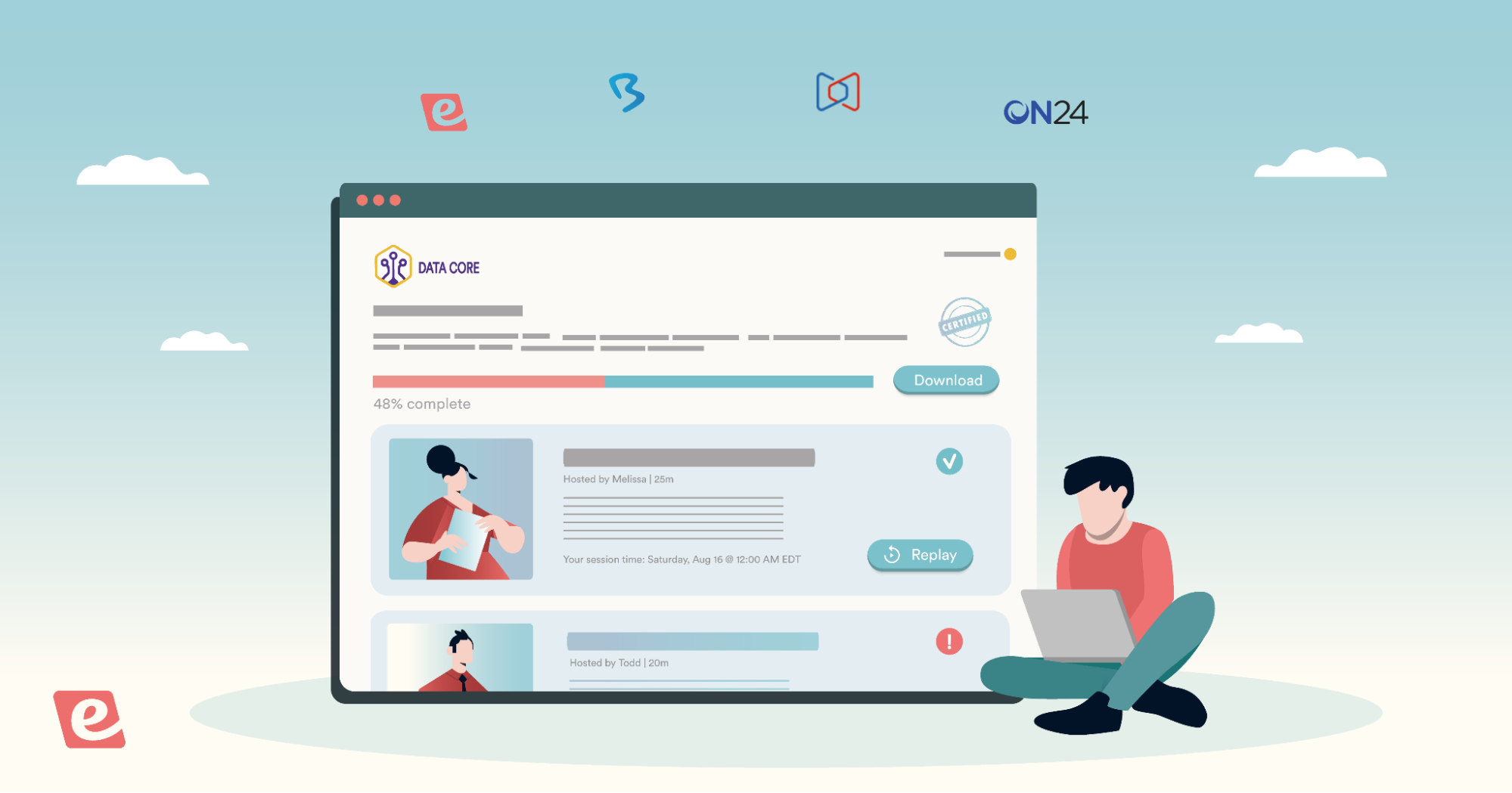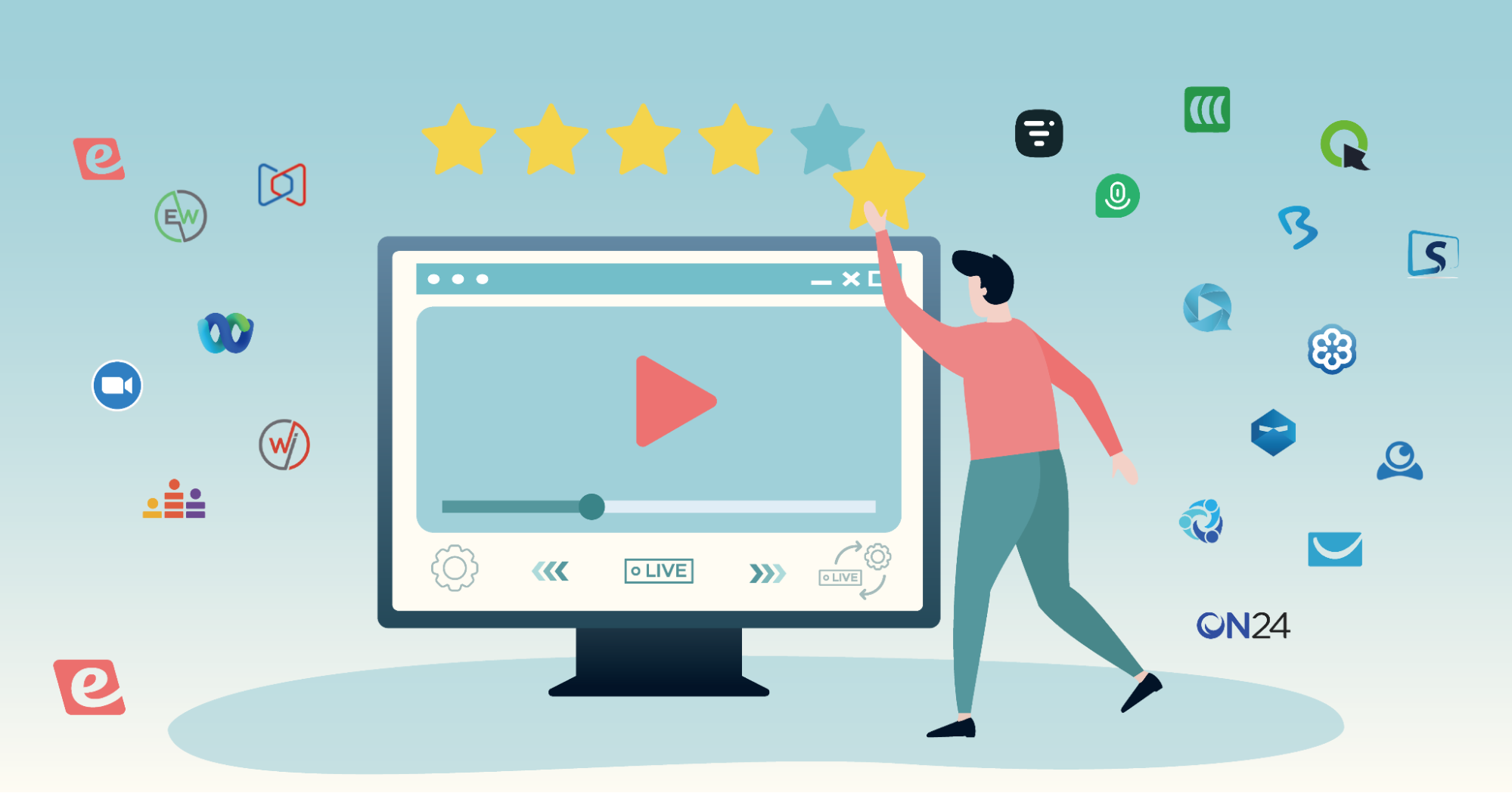There are really only two ways to boost webinar registration. You can either increase the number of eyeballs on your webinar registration page or optimize its conversion rate so that you end up with more registrants even with the same number of website visitors.
Getting more eyeballs is the more expensive and time-consuming lever to pull on so we'll start with the conversion rate optimization (CRO) side of the equation. Don't worry, we'll go over a few proven webinar promotion strategies at the end of the article as well!
Note: We're operating under the assumption that you've chosen the right webinar topic for your target audience. If the topic your presentation is covering isn't the right fit for your audience then no amount of webinar promotion or conversion rate optimization will yield the desired results.
How to increase webinar registration by optimizing conversion rates
There are three main ways to increase the conversion rate on your webinar registration page:
1. Optimize webinar landing pages
First of all, you'll need to perfect the art of writing attention-grabbing titles for your webinar. Those first few seconds after a website visitor lands on your webinar registration page will determine whether or not they decide to learn more about the upcoming event instead of bouncing.
A good title should clearly describe a webinar's main topic, highlight key benefits, and instill a sense of urgency to register. An example of a compelling title for your webinar registration page would be: How to 2x Organic Traffic With On-Page SEO [Registration Ends Soon]
Once you've gotten people's attention, you'll need to convince them to sign up with a concise bullet list of the benefits they'll get by attending the webinar. Keep the focus on the specific problems that your webinar aims to solve and stick to 3-5 bullet points.
If your webinar features guest speakers then you'll also want to include speaker bios on the registration page to establish their credibility. Alternatively, you could add testimonials and other types of social proof that back the expertise of the primary webinar host.
Last but not least, have interactive elements that evoke a sense of urgency and/or scarcity on your registration page. This could be a countdown timer ticking down or a limited number of slots available for registrants.
If you want to learn more about this topic then feel free to read our full guide on how to create a high-converting webinar landing page. You can also watch our on-demand webinar on landing page CRO featuring Bob Sparkins from Leadpages:


2. Offer on-demand access
While rules of thumb like "don't host your webinar on a weekend" can be helpful, there's no such thing as a best time to host a webinar (especially when catering to a global audience across multiple time zones).
As such, the only way to eliminate scheduling conflicts altogether and get website visitors into your presentation at their peak moment of interest is to switch from live events to on-demand webinars. Instead of making them wait for future webinars that are weeks away, just let people join right now.
After all, we already live in a world of on-demand services from companies like Netflix, Spotify, and Xbox. Why should registrants have to wait before accessing your presentation when they already have instant access to their movies, music, and games?
Our webinar platform, eWebinar, even lets you create just-in-time webinars with countdown timers that are automatically set to start within a few minutes of a visitor arriving on your website. This helps drive webinar registrations by making people feel like they arrived at the perfect time to join the presentation.

The best part is that our on-demand webinars come equipped with live chat and 20+ interactions that help you engage attendees even if the presentation is pre-recorded. To experience an interactive on-demand webinar for yourself, just watch our product demo presentation built using eWebinar!
[Demo card]
3. Simplify signup forms
Having too many fields on your webinar registration form adds too much friction for potential registrants and can thus become a barrier during the registration process. As such, you should strive to keep your signup forms are short as possible while still collecting essential information like their name and email.
In fact, the problem of registration friction was so widespread that we decided to engineer our own solution to it. When using eWebinar, you'll now be able to integrate webinars onto any page of your website with our embedded player widget.

This widget only asks for the bare minimum then immediately lets the visitor access the presentation upon providing their name and email. This is far more effective than having a static registration link on your website that most visitors won't even bother to click.
Potential attendees will be far more likely to register if they're within seconds of accessing the presentation rather than having to fill up an extensive registration form for an upcoming webinar that they might not even have time to attend down the line.
That's why hosts need to tread a fine line between making their webinar content as easily accessible as possible while still gathering enough registrant details to follow up with attendees after the presentation ends.
How to increase webinar registration by driving more website traffic
Once you've optimized your registration page to convert as well as it can, the new bottleneck will be the number of people you can send to it. This means it's time to start promoting your webinar across multiple channels and then double down on the winners (by tracking where registrants came from).
There are three main webinar promotion channels to try:
1. Promoting webinars on social media
The easiest way to share your webinars would be to post about them on social media platforms that your target audience is likely to use. B2C companies typically post on Facebook, Instagram, and Twitter (still not calling it X) while B2B companies gravitate towards LinkedIn.
Reddit has also been increasing its traffic share over the past few years which could make it an attractive option for webinar hosts. Another unique benefit is that it's a lot easier to get in front of specific audiences because there's a subreddit for everything.

Regardless of which social media platform you end up choosing, you'll get the choice between posting organic content or going for paid advertising. The organic route is more cost-effective but will also be more time-consuming.
On-demand webinars typically benefit from the evergreen nature of organic traffic whereas live webinars may be better suited to paid advertising since hosts have a limited amount of time to promote before the day of the event.
If you don't want to spend time building an audience but don't have the budget for paid ad campaigns, you could try partnering with influencers to leverage existing audiences. Micro-influencers (who typically have anywhere between 10,000 and 100,000 followers) can be quite affordable to work with.
2. Promoting webinars with email marketing
Before diving into the expensive world of paid advertising, one other webinar promotion strategy you could try is email marketing. This works best when you have an existing mailing list of people who downloaded lead magnets or subscribed to your newsletter.
In this scenario, you can either mention the upcoming webinar in your newsletter or nurture subscribers with an email sequence designed to get them to register. However, you should avoid sending unsolicited invitations outright without further context since this may just make them unsubscribe.
If you're building a webinar audience from scratch then you could run an outbound email campaign. Cold emails tend to have lower open rates than those sent to warm prospects but having a solid subject line can help offset that.
A killer subject line should contain numbers, state the benefit, and have a clear call to action:
5 ways to increase conversions on organic B2B content [Register Now]
Once you've gotten people to open your email, it's crucial that the body content itself is compelling enough to get them to register for the webinar. The same principles from registration pages apply here too:
-
Have a bullet list with 3-5 benefits
-
Include speaker bios and testimonials
-
Evoke urgency with limited slots available
Remember, the click-through rate on cold emails is usually only 2-5% so you'll need to operate at scale!
3. Promoting webinars through paid advertising
Paid advertising can be the fastest way to boost webinar registration numbers but also by far the most expensive. This is doubly true if you advertise on platforms like LinkedIn that can cost $5 to $10 per click (compared to Facebook's sub-dollar CPC).

Source: Instapage
Unless you have an unlimited supply of ad spend, you'll need to leverage paid ads strategically to acquire more registrants without breaking the bank. Retargeting campaigns are one way to do this since they only show your ads to people who have already visited your website.
This means you'll be promoting your webinar to prospects who likely already have a vague idea of who you are and what you do. That smaller audience will cost you less money to advertise to and be more likely to convert (yielding a higher return on investment while reducing ad spend).
It's important to realize that pay-per-click ads aren't the only paid advertising option available. You could also try offering incentives for those who attend your webinar or operating referral programs that award a commission to people who refer a friend to your presentation.
That said, these unorthodox paid advertising methods tend to require more oversight and can be a bit hit or miss. As such, most hosts with the budget to do so end up paying a premium for the simplicity and automaticity of running PPC ad campaigns to drive people to their webinars.
Conclusión
As always, our goal is to provide valuable insights to those who want to make their webinars a smashing success. We hope that you apply these tips to boost webinar registration numbers on your upcoming webinars.
That being said, getting people to register for your webinar is only half the battle. All that effort will be for naught if your registered attendees don't actually show up to the presentation. If you're ready to start boosting webinar attendance then read our full guide on how to increase webinar attendance.
In that guide, we show you four ways to improve your webinar attendance rate. A boost in attendance can have a massive impact on your bottom line by ensuring that the majority of registrants make it to the presentation they signed up for.








